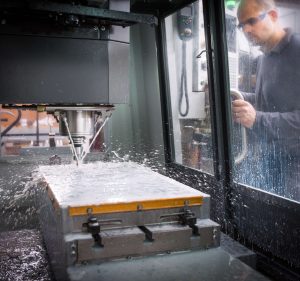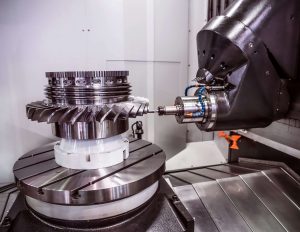You’re comparing whether custom industrial machinery is worth it versus a standard, off-the-shelf machine. You want clear, practical reasons—grounded in safety, uptime, and cost—to justify the investment. This guide breaks it down with Ontario context and actionable next steps.
What this article covers
- Why a tailored machine beats a generic option in most complex processes
- How safety and compliance are designed in—not bolted on
- Ways to protect your maintenance budget and plan for growth
Reason 1 — A Perfect Fit Reduces Downtime
When a machine is built for your exact workflow, you remove the compromises that cause stoppages and quality escapes. “Fit” isn’t just dimensions; it’s how material moves, how operators interact, how sensors confirm each step, and how the line recovers from faults.
What “fit” looks like in practice
- Right-sized throughput: Cycle time matched to your real takt—not someone else’s data sheet.

- Ergonomics and access: Clear load/unload, tool/change points, and cleaning paths reduce errors.
- Tooling that matches variation: Fixtures and EOAT designed for your part tolerances and surface finishes.
- Fail-safe checks: Sensors, vision, or force/torque confirmation at critical steps prevent rework.
Poor fit shows up as micro-stoppages, excessive changeovers, and operator workarounds. A custom design addresses these at the root, rather than layering procedures on a machine that was never meant for your process.
Integration matters
Modern plants depend on seamless data flow. Custom machines can be specified to:
- Talk to your MES/SCADA for production counts, scrap, and OEE metrics.
- Handshake with upstream/downstream equipment (robots, conveyors, packaging) through proven I/O maps.
- Expose diagnostics so technicians see faults fast and fix what matters.
Ontario note: If your new cell changes safeguarding or introduces new protective devices, you may trigger a Pre-Start Health and Safety Review (PSR) under Ontario guidance—one more reason to design integration and guarding holistically from the start.
Reason 2 — Safety by Design Meets Real-World Standards
Custom machines let you bake safety into the architecture: guarding, safety-rated controls, reduced-energy modes, lockout points, and human-machine interface conventions that match your site.
Core elements to design in
- Physical guards and interlocks: Barrier guards, two-hand controls, light curtains, and area scanners applied where risk assessment calls for them.
- Reduced speed/energy modes: During set-up or maintenance, lowering motion/force is a recognized risk-reduction measure that improves visibility and control around hazards. Research published in Safety Science outlines the value of reduced-risk operating modes in industrial machinery—see Safety of industrial machinery in reduced risk conditions for a deeper look.
- Clear lockout/tagout design: Lockable isolation of energy sources (electrical, pneumatic, hydraulic) with labeled points and verification.
Ontario compliance—what to expect
- PSR triggers for safeguarding: Ontario’s guideline outlines when a PSR is required if protective elements (e.g., barrier guards, light curtains, interlocks) are used with an apparatus. A custom machine supplier should help you scope this early, so there are no surprises late in commissioning.
- CSA Z432 updates: CSA Z432 provides guidance for the design, installation, maintenance, and operation of machinery safeguarding. The 2023 update streamlines expectations and reflects current practice. Many Ontario organisations treat it as a go-to reference when specifying new equipment.
Why custom helps with safety & compliance
- Risk assessment drives the design. You can specify guard types, safe distances, and safety-related control functions that match your process risks.
- Documentation aligns with audits. From layout drawings and safety circuits to manuals and training aids, a custom project can ship with what your joint health and safety committee, insurer, or MOL inspector will ask to see.
- Operator trust improves. When guarding is functional, visible, and ergonomic, operators are less likely to bypass it—reducing incidents and improving uptime.
Reason 3 — Lower Lifetime Cost With Maintainability Built In
Sticker price is loud; lifetime cost is what matters. Custom designs let you engineer for maintainability upfront, which protects your budget year after year.
Design choices that pay back
- Service access: Doors, slides, or swing-outs to reach wear points without full teardowns.
- Common spares: Use of stocked components reduces waits and emergency shipping.
- Condition monitoring: Vibration, temperature, cycle counts, and fault histories help your team catch failures early.
- Predictive maintenance (PdM): When you have the right data, you can plan repairs during scheduled downtime and reduce unplanned stops.
When to retrofit vs. replace
- Retrofit if the frame and motion platform are solid, and issues centre on controls, guarding, or tooling.
- Replace if the core mechanism is undersized, fatigued, or if your product mix has outgrown the machine’s architecture.
- Hybrid if you can reclaim 60–80% of the machine with new controls/EOAT while adding a new station for a growth SKU.
Where Custom Machine Manufacturing Makes the Biggest Impact
Custom solutions drive step changes in lines that struggle with variation, safety, or traceability:
- High-mix assembly: Fixtures that quickly adapt to size or material changes.

- Regulated products: Integrated mistake-proofing and digital traceability for audits.
- Harsh environments: Materials and seals chosen for dust, washdown, or temperature extremes.
- Tight tolerances: Force/position control and in-process verification to catch defects at source.
- Operator-heavy operations: Ergonomics, lift assists, and semi-automation to cut strain and errors.
How to Scope a Winning Custom Project
- Define the business case
- Target takt, scrap reduction, or ergonomic goals.
- Clarify SKUs now and in 24 months.
- Capture safety & compliance needs early
- Note guarding expectations and PSR triggers.
- Align to your corporate safety standard and reference CSA Z432 where applicable.
- Map integration points
- MES/SCADA tags, upstream/downstream handshakes, data you must log for quality.
- Specify maintainability
- Access, spares list, and data signals for PdM. Use these to build your CMMS templates.
- Run a design review with operations
- Operators and maintenance techs spot “death by a thousand cuts” details before they ship.
- Plan FAT/SAT
- Test alarms, interlocks, and fault-recovery routines—don’t leave them as “we’ll tune it on site.”
Work With MBI
MBI designs and builds equipment that fits your process, safeguards your people, and supports long-term uptime. See our capabilities to understand design, fabrication, controls, and commissioning under one roof, then contact us to start a scoped discussion with timelines and budget ranges.

